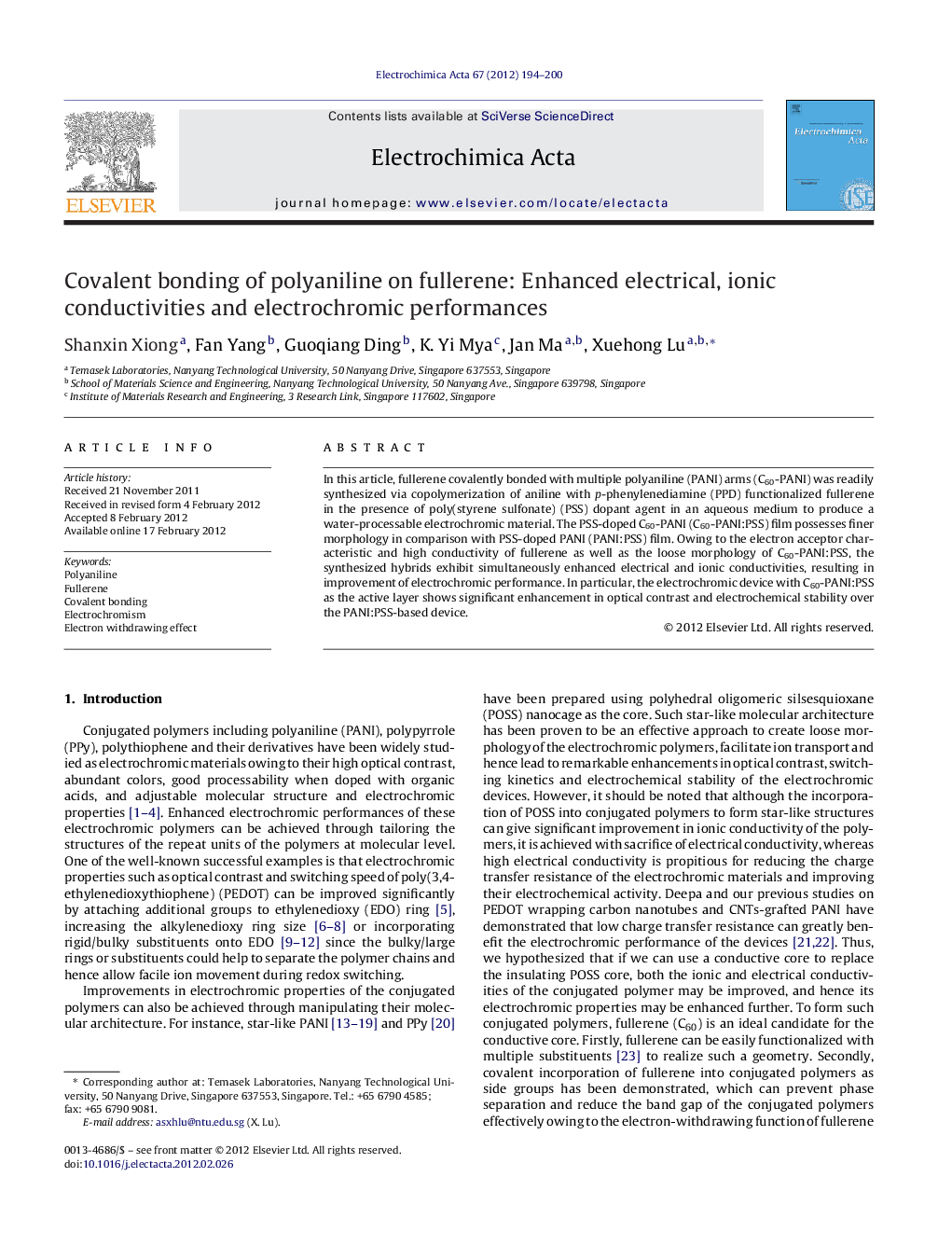| Article ID | Journal | Published Year | Pages | File Type |
|---|---|---|---|---|
| 188906 | Electrochimica Acta | 2012 | 7 Pages |
In this article, fullerene covalently bonded with multiple polyaniline (PANI) arms (C60-PANI) was readily synthesized via copolymerization of aniline with p-phenylenediamine (PPD) functionalized fullerene in the presence of poly(styrene sulfonate) (PSS) dopant agent in an aqueous medium to produce a water-processable electrochromic material. The PSS-doped C60-PANI (C60-PANI:PSS) film possesses finer morphology in comparison with PSS-doped PANI (PANI:PSS) film. Owing to the electron acceptor characteristic and high conductivity of fullerene as well as the loose morphology of C60-PANI:PSS, the synthesized hybrids exhibit simultaneously enhanced electrical and ionic conductivities, resulting in improvement of electrochromic performance. In particular, the electrochromic device with C60-PANI:PSS as the active layer shows significant enhancement in optical contrast and electrochemical stability over the PANI:PSS-based device.
Graphical abstractWater-soluble and branched C60-PANI hybrids are readily synthesized. The enhanced ionic conductivity and the electron withdrawing function of C60 lead to improved contrast and switch kinetics of the C60-PANI-based electrochromic device. The electrochemical stability of the device is also significantly improved owing to the donor-acceptor interactions in the C60-PANI hybrids.Figure optionsDownload full-size imageDownload as PowerPoint slide
